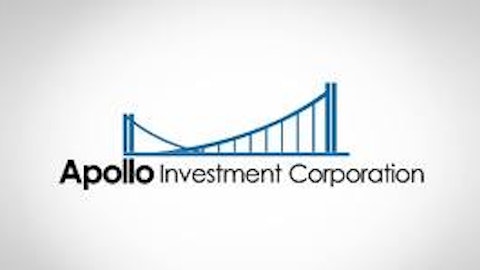Business development companies have been some of the best performers over the past decade. High dividends and a relatively flat market have led BDCs to consistent outperformance.
This year, though, the biggest business development companies are falling behind. Ares Capital Corporation (NASDAQ:ARCC) and smaller Apollo Investment Corp. (NASDAQ:AINV). are both in the red this year. Let’s explore why this industry isn’t keeping pace with the market.

A BDC’s critical role
Business development companies (BDCs) have a very critical role in finance. BDCs provide equity and debt financing to companies that are too big for a commercial bank, but too small for Wall Street. The industry essentially raises funds from Wall Street to invest in smaller companies that can’t get the same attention from investors.
Thus, business development companies are best equated to an ETF of debt and equity investments in unlisted companies. The investments the portfolio managers make are illiquid, which results in a large liquidity premium (higher returns) for investors.
This year, though, returns are abysmal across the board.
Three reasons BDCs are out
It’s not Europe, nor is it concerns about an American recovery. The underlying business model is at risk because rates are headed higher.
If the Federal Reserve moves to slow bond buying, business development companies will be adversely affected. The Fed’s policy is critical for BDCs.
- The industry relies on leverage – Higher financing costs take a bite out of profitability. Funds are typically raised with short- and long-term bond issuance with rates based on the American risk-free rate. Those funds are then invested in debt with a floor based on LIBOR. If rates on the U.S. Treasury rise and LIBOR rates remain low, BDCs will pay more for capital but see no increase in interest revenue from their existing debt investments.
- Upcoming credit crunch – Loose monetary policy sent rates lower, and investors into new corners of the market. Investors have snapped up everything from dividend paying stocks to junk bonds to get yield. When the Fed leaves the debt markets, funds will flow back into safer fixed-income investments. That could leave the junk bond market (the market BDCs are most involved in) starving for cash. If small companies cannot raise money, default rates shoot higher, and BDCs take a bath on their investment portfolios. I raised questions about valuations in the junk market earlier this year as loosened policies at the Fed inflated investors’ risk appetite. Ares Capital Corporation (NASDAQ:ARCC) has 90% of its portfolio in debt, while Apollo Investment Corp. (NASDAQ:AINV) has 94% of its portfolio invested in debt instruments.
- Fixed rate loans lose their luster – When rates rise, the value of a fixed-rate instrument plummets. Apollo Investment Corp. (NASDAQ:AINV) carries considerably high exposure to rising rates, holding 64% of its whole debt portfolio in fixed-rate loans. Ares Capital Corporation (NASDAQ:ARCC) operates on the opposite end of the spectrum, holding its fixed rate investments at a fourth of its portfolio.
Time to buy?
The best time to buy anything is when its on sale. After lagging the market to date, BDCs may appear like a grand bargain, but it pays to wait.
Investors need to know more about Bernanke’s next move before placing another big bet on the future of the business development company. Their decade of outperformance came during a period in which rates were pushed lower time and time again – periods when BDCs and other bond-like investments should outperform.
Investors should wait for the effects of Bernanke’s next move and assess default rates when aggressive bond buying comes to a halt. The Fed juiced the credit market, but when liquidity subsides, we’ll see if the industry can play defense as well as it can play offense.
Jordan Wathen has no position in any stocks mentioned. The Motley Fool has no position in any of the stocks mentioned. Jordan is a member of The Motley Fool Blog Network — entries represent the personal opinion of the blogger and are not formally edited.
The article Why BDCs Are Lagging the Market originally appeared on Fool.com is written by Jordan Wathen.
Copyright © 1995 – 2013 The Motley Fool, LLC. All rights reserved. The Motley Fool has a disclosure policy.




